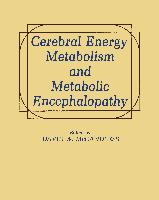Cerebral Energy Metabolism and Metabolic Encephalopathy
BücherAngebote / Angebote:
In recent years, there has been rapid growth in knowledge pertaining to the nervous system. This has, in some measure, been due to the development and application of a number of techniques such as the 2-deoxyglucose method and microchemical methods for measuring metabolites and regional cerebral blood flow. Data from the application of these techniques are just beginning to be collected, and the next few years promise to bring many new and exciting findings. The study of energy metabolism in brain is particularly interesting due to the fact that although the brain has scant energy reserves (as compared with the liver), it has one of the highest metabolic rates in the body. Recent studies from several laboratories have shown a surprising divergence of re sponses to metabolic insult in different areas of brain. In this regard, the cer ebellum, for example, may have metabolic features which are uniqve from those of any other region. The high-energy phosphate compounds ATP and phos phocreatine, supplied by the oxidative metabolism of glucose, are necessary for normal cerebral functions such as the maintenance of membrane potentials, transmission of impulses, and synthetic processes. Interruption of substrate or "poisoning" of the system by a variety of means lead to a rapid change in cellular energetics, and ultimately cell death. From the clinical standpoint, an interesting feature of metabolic encephalopathy is that in many cases, early diagnosis and treatment may result in a rapid reversal of symptoms.
Folgt in ca. 5 Arbeitstagen




